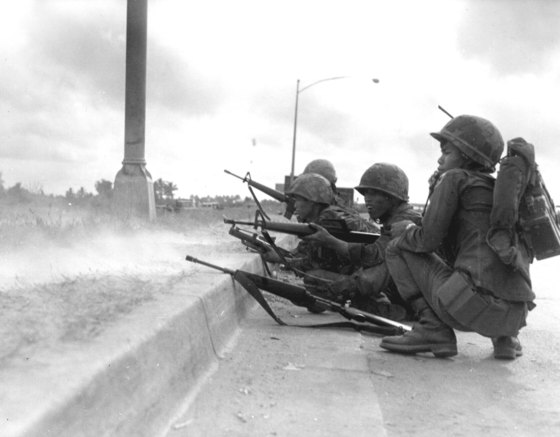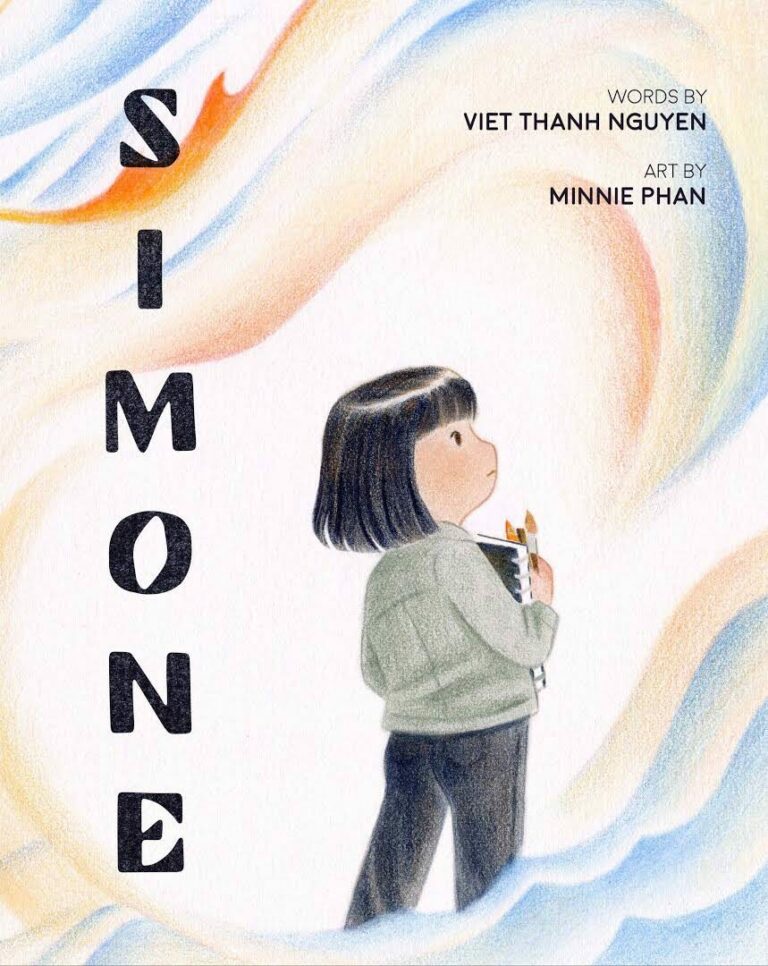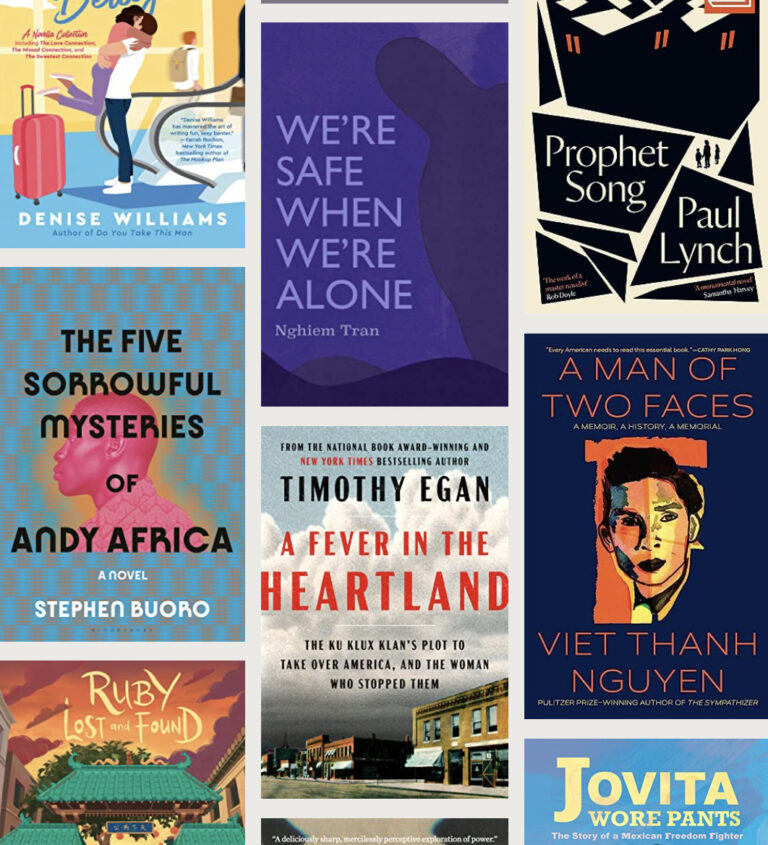Karl Ashoka Britto reviews The Sympathizer for Public Books.

The Sympathizer, Viet Thanh Nguyen’s riveting debut novel, is a chronicle of war wrapped in a spy thriller and tucked inside a confession. It is also a political satire, a send-up of Hollywood, and a scathing critique of mid-20th-century Orientalism. Nguyen juggles genres like so many flying AK-47s, and to dazzling, often hilarious effect. At the same time, his play with narrative allows for a profound reflection on narrative itself: at its core, The Sympathizer is about power and representation, about stories that function to justify torture and murder, and about words that make abstract the bodies of people whose lives have been shattered by colonialism and war.
Published 40 years after the end of the Vietnam War, The Sympathizer has already garnered considerable critical acclaim for Nguyen, who teaches English and American Studies and Ethnicity at the University of Southern California. The novel begins during the chaotic days leading up to the final departure of American forces from South Vietnam in April 1975, shifts to trace the establishment of the Vietnamese diaspora in Southern California, and then returns to early post-war Vietnam in its final chapters.
American literature about Vietnam has until recently been largely focused on the experiences of US soldiers, and The Sympathizer has rightly been welcomed for the different perspective it brings to the war and its devastating effects on the Vietnamese. And yet, while the novel has been praised for its “rare and authentic voice,”1 what is most striking about Nguyen’s unnamed narrator is how thoroughly he complicates any straightforward understanding of authenticity. Introducing himself as “a spy, a sleeper, a spook, a man of two faces,” he signals from the novel’s first sentence that his will be a story in which identity and truth are anything but clear.
Part of the novel’s complexity arises from the density of its network of intertextual referents and resonances. Certain scenes, as well as the different moods that characterize particular sections of the novel, bring to mind the work of American and Vietnamese authors who have written about the war: Larry Heinemann, Duong Thu Huong, and Bao Ninh, among others. Many events within the narrative, and the narrator’s reflections upon those events, directly reference or allude to a range of philosophers, theorists, and cultural critics, from Marx and Hegel to Frantz Fanon and Frank Chin. The narrator’s own voice slips in and out of different registers and genres, both literary and cinematic. Consider the tone of this sentence: “The American Dream, the culture of Hollywood, the practices of American democracy, and so on can altogether make America a disorienting place for those like us who hail from the Orient.” This modest piece of cultural analysis is offered by way of explanation for a markedly different kind of writing, the exuberantly hardboiled description of a woman’s legs that appeared a couple of pages earlier: “Longer than the Bible and a hell of a lot more fun, they stretched forever, like an Indian yogi or an American highway shimmering through the Great Plains or the southwestern desert. Her legs demanded to be looked at and would not take no, non, nein, nyet, or even maybe for an answer.”
The Sympathizer often wears its web of allusion lightly, and the novel’s moments of intertextual reference and generic parody make for a lively and richly suggestive narrative. On a deeper level, Nguyen’s engagement with Euro-American authors and texts concerned with imperialism and imperialist fantasies—Joseph Conrad and Apocalypse Now, Albert Camus, Graham Greene—contests a history of representation that, as Edward Said put it in Culture and Imperialism, “offers a profoundly unforgiving view … of Western imperialist illusions” while nonetheless arguing “that the source of the world’s significant action and life is in the West, whose representatives seem at liberty to visit their fantasies and philanthropies upon a mind-deadened Third World.”2 At the same time, the prominence of intertextual reference in the novel also draws our attention—at times with humor, at times with anguish—to the mediated nature of any historical narrative.
The question of the narrator’s authenticity is, of course, also complicated by his own story. The illegitimate son of a French priest and his young Vietnamese maid, the American-educated narrator works as a spy for the North Vietnamese, first in South Vietnam and then later in California, where he monitors and reports on the ongoing anti-communist nationalism of the refugee community. His two closest friends from childhood, Man and Bon, are situated at opposite ends of the ideological spectrum: Man becomes the communist official to whom he addresses his reports, written in invisible ink and encoded using a cipher based on a book of Orientalist, anti-communist propaganda; Bon is a former soldier in the South Vietnamese Army who believes the narrator to be committed to the struggle to win Vietnam back from the communists, and who shares a squalid apartment with him in Los Angeles before returning to Southeast Asia to carry on the fight. The narrator’s divided allegiance—his desire to protect his friend as best he can from the communist government for which he secretly works—pushes him to accompany Bon on this mission and sets in motion the events of the harrowing final chapters. His capacity to sympathize, “to see any issue from both sides,” makes him both a compelling narrator and a vulnerable yet thoroughly complicit player in the theater of cruelty that shapes his life.
The bulk of the novel takes the form of a first-person retrospective account, though we learn early on that it is in fact a particular variant of this form: a confession, written in an isolation cell. In a striking formal gesture, the narrative continues beyond the end point of this confession, and the confession itself—that is, everything that we have read in the 295 pages that take us from the narrator’s departure from Vietnam in April 1975 to his arrest on the banks of the Mekong a few years later—becomes the subject of his interrogation in the reeducation camp where he is imprisoned. The text he has written—the novel we hold in our hands—is mercilessly criticized by the commandant assigned to his case, as much for its style as for what may be lacking in its content: “[I]t hardly seems like a genuine confession to me … Confessions are as much about style as content, as the Red Guards have shown us. All we ask for is a certain way with words … you are a communist only in name. In practice, you are a bourgeois intellectual … your language betrays you. It is not clear, not succinct, not direct, not simple. It is the language of the elite. You must write for the people!”
Subjected to torture, the narrator makes a second confession that seems to fill a crucial gap in the first. Embedded in what is perhaps the most narratively complex passage in the text, this confession is written in the first person, transcribed from what we learn was a tape recording made while the narrator was being tortured, and of which he has no memory; furthermore, the chapter leading up to this moment has shifted into the third person, with the interrogation intermittently represented in a Q&A format:
Q: What did you do?
A: I watched.
Q: What did you see?Later, sometime in the bright future, the commissar would play the patient a tape recording of his answer, though he had no memory of the tape recorder’s presence. Many people who heard their voices on tape thought that they did not sound like themselves, which they found disturbing, and he was no exception. He heard this stranger’s voice say, I saw everything.
This, then, is the authentic voice of the narrator: a voice that is strange to him and estranged from him, a voice that speaks from a place outside of memory, compelled to relate a scene of atrocious violence. The scene is deeply troubling, not only for its manifest content, but also for the way in which its horror seems to bring us, at last, to the heart of the war’s darkness, even as we know that we cannot take this form of authenticity at face value. The confession, after all, has been extracted through torture. As the narrator has learned from a CIA operative, “Brute force will get you bad answers, lies, misdirection, or, worse yet, will get you the answer the prisoner thinks you want to hear. He will say anything to stop the pain.” We also learn that the narrator is still imprisoned as he writes the pages that describe his interrogation, and that the man who ordered his torture will read them.
Through this narrative complexity, Nguyen accomplishes something quite extraordinary: he represents the horror of war while never allowing us to forget the conditions out of which its representation emerges in the text. What is at stake here is not so much the objective truth of the scene described by the narrator, but rather the novel’s insistence upon staging his narrative as a confession, produced under constraint and compelled to exist in the service of a structure of power that sets the terms of representation itself.
Since farce and tragedy are deeply intertwined in The Sympathizer, it is hardly surprising that a double of the scene of atrocity appears much earlier in the novel, during an extended subplot in which the narrator is hired as a consultant—a sort of authenticity expert—on an overblown, Apocalypse Now-like Hollywood film about the war. While the darkly comic tone of this section of the novel would seem to distance it from the subsequent account of torture, a scene of violence in the film’s screenplay clearly echoes the narrator’s interrogation. Other details draw our attention to the link between these two parts of the novel: certain moments of dialogue during the narrator’s interrogation appear in screenplay format, and the room in which the scene of violence recounted by the narrator occurs is called “the movie theater.”
Nguyen’s point here, of course, is not to equate the movie theater and the torture chamber, but to remind us that power is always interested in shaping the raw material of traumatic history to its own ends. If The Sympathizer lays bare the corruption of post-1975 Vietnam and the coercive force underlying its national narrative, it is no less fierce in its critique of the goal of Hollywood, “the simultaneous lobotomization and pickpocketing of the world’s audiences. The ancillary benefit was strip-mining history, leaving the real history in the tunnels along with the dead, doling out tiny sparkling diamonds for audiences to gasp over … I pitied the French for their naïveté in believing they had to visit a country in order to exploit it. Hollywood was much more efficient, imagining the countries it wanted to exploit.”3
Caught within multiple structures of power, the narrator struggles to resist the forces that would produce the event as spectacle, to find a different way to comprehend the catastrophe of war. In this, he finds himself in the position of the angel of history described in the ninth of Walter Benjamin’s “Theses on the Philosophy of History”:
A Klee painting named “Angelus Novus” shows an angel looking as though he is about to move away from something he is fixedly contemplating. His eyes are staring, his mouth is open, his wings are spread. This is how one pictures the angel of history. His face is turned toward the past. Where we perceive a chain of events, he sees one single catastrophe which keeps piling wreckage upon wreckage, and hurls it in front of his feet. The angel would like to stay, awaken the dead, and make whole what has been smashed. But a storm is blowing from Paradise; it has got caught in his wings with such violence that the angel can no longer close them. This storm irresistibly propels him into the future to which his back is turned, while the pile of debris before him grows skyward. This storm is what we call progress.4
Benjamin’s figure resonates strongly within Nguyen’s textual project, both because it captures the narrator’s anguish in the face of a disastrous past he is bound to witness, and because it is, precisely, a figure: an allegorical representation in itself as well as a reflection on history mediated here through painting, another form of figural representation.
In The Sympathizer, the angel of history is first evoked at the end of the Hollywood section, almost exactly at the novel’s midpoint. The narrator, having fallen out with the film’s director over the scene of violence in the screenplay, is walking through the cemetery built on the set when an unexpected explosion sends him flying: “a blare of trumpets deafened me. In the silence, the earth vanished—the glue of gravity dissolved—and I was propelled skyward, the wreckage of the cemetery blazing before me, receding as I was blown backward, the world passing by in a blurred haze that faded into mute darkness.” Here, Nguyen deftly embeds historical trauma within a heavily mediated narrative moment: the narrator is blown backward like Benjamin’s angel, though by an explosion on the set of a movie meant to evoke Apocalypse Now—itself a representation of the Vietnam War mediated through Conrad’s Heart of Darkness.
During his interrogation, the narrator takes up the position of the angel of history for a second time, just after narrating the scene of atrocity. Here, in a heartbreaking extended sentence that runs over two pages, he represents the history of Vietnam not as a series of chronologically unfolding events, but as a single utterance cast somewhere between supplication and yearning:
… if you would please just turn off the lights … if you could see that I have nothing left to confess, if history’s ship had taken a different tack … if my father had gone to save souls in Algeria instead of here … if we acknowledged that we are all puppets in someone else’s play, if we had not fought a war against each other … if the Americans hadn’t come to save us from ourselves … if the Soviets had never called us comrades … if the French had never sought to civilize us … if the Chinese had never ruled us for a thousand years … if the Buddha had never lived, if the Bible had never been written … if the dragon lord and the fairy queen had not given birth to us … if legend’s phoenix had truly soared from its own ashes rather than simply crashed in our countryside … if history had never happened, neither as farce nor as tragedy … if I saw no more of these visions, please, could you please just let me sleep?
This too is a form of authenticity: the counterfactual despair of a narrator with a story that can only be told through compromise, and in full awareness of those left dead in the tunnels of history.
And yet the narrative continues, beyond the second confession, the interrogation, and the 354-page manuscript written in the reeducation camp. Having been released, the narrator waits for the boat that will take him away from Vietnam with other refugees from the revolution. He waits, and he writes, right up to the moment of his writing: “only a few more [words] need to be written by the light of this oil lamp.” The final pages of the novel are produced outside of the confessional structure, and are marked, significantly, by a shift in narrative voice to the first person plural. The narrator has managed to secure copies of his manuscript, and will carry it with him: “[T]his manuscript [is] our testament if not our will. We have nothing to leave to anyone except these words, our best attempt to represent ourselves against all those who sought to represent us.” For all of its shortcomings, gaps, and fissures, for all of its gestures of self-protection and self-annihilation, his manuscript is a part of Vietnamese history, just as the scene of atrocious violence that haunts it is no less a part of that history for being bound up in the structures of power that seek to govern its retelling.
1. Robert Olen Butler writes that “Viet Thanh Nguyen bring[s] a rare and authentic voice to the body of American literature generated by the Vietnam War.” https://vietnguyen.info/2014/sympathizer
2. Edward W. Said, Culture and Imperialism (Knopf, 1993), xix.
3. Nguyen has long been concerned with the power of Hollywood to produce dominant, Orientalizing representations. See his remarks on Oliver Stone’s Vietnam trilogy in Race & Resistance: Literature & Politics in Asian America (Oxford University Press, 2002), pp. 112, 120. More recently, he has written in Fanonian terms of his own experiences watching Hollywood films about the war: “I watched ‘Apocalypse Now’ and saw American sailors massacre a sampan full of civilians and Martin Sheen shoot a wounded woman in cold blood. I watched ‘Platoon’ and heard the audience cheering and clapping when the Americans killed Vietnamese soldiers. These scenes, although fictional, left me shaking with rage. I knew that in the American imagination I was the Other, the Gook, the foreigner, no matter how perfect my English, how American my behavior.” See “Our Vietnam War Never Ended,” New York Times, April 26, 2015.
4. Walter Benjamin, Illuminations (Knopf, 1969), pp. 257-8.
Karl Ashoka Britto is Associate Professor of French and Comparative Literature at the University of California, Berkeley. He is the author of Disorientation: France, Vietnam, and the Ambivalence of Interculturality. Britto’s current work considers the body as spectacle in colonial and postcolonial literature.


